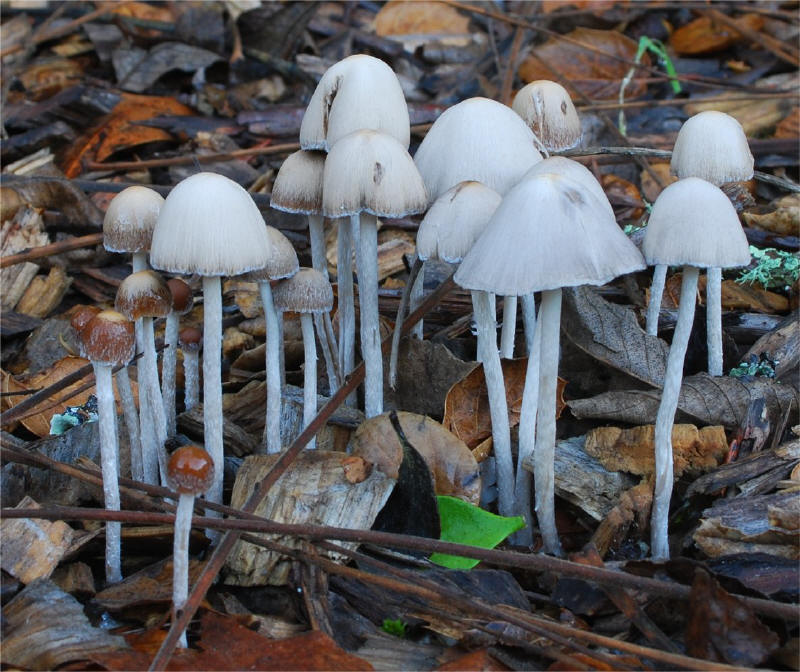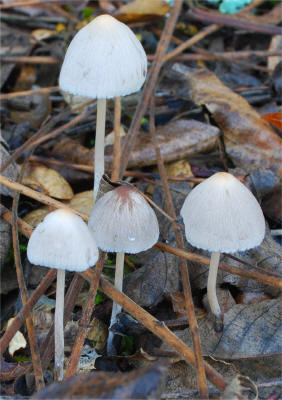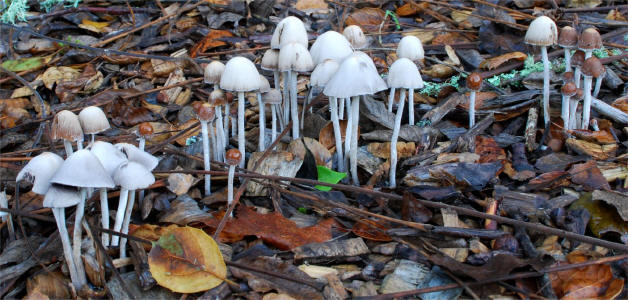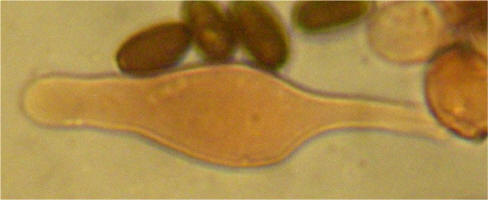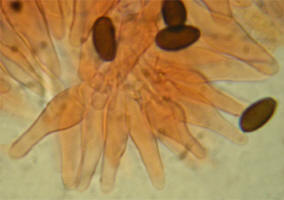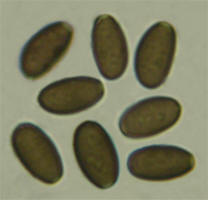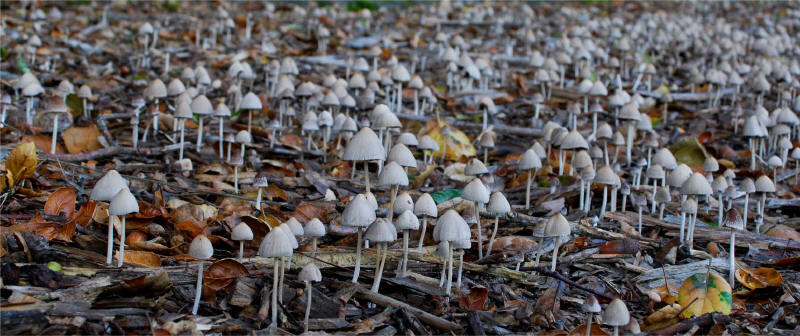| The cluster of species around
Psathyrella gracilis forms a well supported molecularly clade,
packed tightly with several species that intergrade quite well. Various
identification schemes have been proposed, based on micro- and
macromorphological features, but most are contradictory and none seems quite
convincing. Such factors as the amount of partial veil remnants on the cap,
rooting stem, reddish discoloration of the gills, size, density of the
cheilocystidia, etc have been factored. Since there is a great deal of
confusion in the literature while new and defining morphological
breakthroughs are lacking, I'm forced to treat them as a complex. Some of
the closely allied varieties and forms are: corrugis,
squamifera, pseudogracilis and microrrhiza.
Molecular analysis has shown also the this complex has a very wide
geographical range spanning the Northern Hemisphere. |
